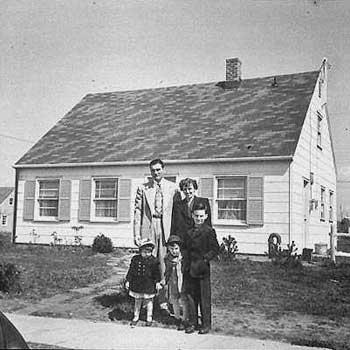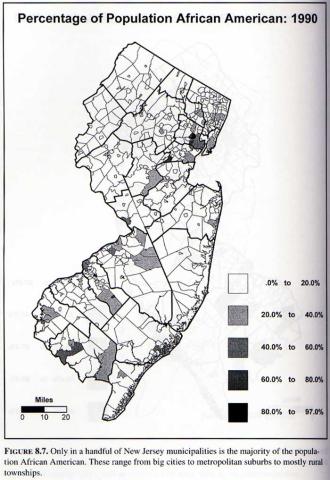Race and Gender: An Ideal Community?
Race
Bill Levitt, the designer of Levittown, refused to sell to blacks for almost two decades. He feared that the popularity and the value of Levitttown property would be greatly reduced if he sold to blacks. Read and react to Levitt's reasons. Though Levittown is just one example of suburb development in the 1950s, segregation was and is a problem that still exists in suburban America. Some of America's most segregated states are states with large suburban populations (i.e. New Jersey). Through high property values and the covert practice of not selling to minority groups many of these communities practice de facto segregation.

"'Levitt initially would not sell to blacks. 'The Negroes in America,' he said, 'are trying to do in four hundred years what the Jews in the world have not wholly accomplished in six thousand. As a Jew, I have no room in my mind or heart for racial prejudice. But … I have come to know that if we sell one house to a Negro family, then ninety to ninety-five percent of our white customers will not buy into the community. That is their attitude, not ours .... As a company, our position is simply this: we can solve a housing problem, or we can try to solve a racial problem. But we cannot combine the two.'"
"A suit by the National Association for the Advancement of Colored People against the Federal mortgaging agencies involved, filed in behalf of six Negroes prevented from buying homes in Levittown, Pennsylvania, was dismissed by the Philadelphia Federal District Court in March 1955. The court ruled that neither the Federal Housing Administration nor the Veterans Administration, although guaranteeing the mortgages, had been charged by Congress with the duty of preventing discrimination in home sales."
Levitt finally decided to desegregate in late 1959 when the State Court of Pennsylvania threatened to hold public hearings about the issue. Fearful of the negative press, Levitt promised to desegregate in order to avoid the bad press.
Gender
Women had made some great strides during W.W.II. Women assisted on the homefront and worked in the factories that the men had abandoned to fight the war. It was during this time that the image of "Rosie the Riveter" was burned into the pages of American history. However, once the war was over there was a movement for women to return to their traditional roles. These roles were highlighted in popular 1950s sitcoms such as Leave it to Beaver and Father Knows Best. In addition, women complained that the enormous growth of the suburbs slowed their progress toward equality. Read the quotes below and react to their situation.
"'Interviewed in the 1950s, women in Levittown and other mass-produced communities complained of boredom and loneliness. When they were asked whom they missed most, they answered, 'My mother.' Many, of course, became mothers. Pregnancy became known as the 'Levittown look.'"
The following is a satirical book about living in the suburbs. Notice the wife's name:
"In Mary Drones's case, her young husband-like other development husbands-hadn't the vaguest clue that everyday monotony was crushing Mary's spirit … In fact, the women didn't know it themselves. Romances in the ladies' magazines, in movies, advertisements and novels all had conditioned the ladies to think marriage meant children, homes of their own, and happiness."
"It (Levittown) would change the very nature of American society; families often became less connected to their relatives and seldom shared living space with them as they had in the past. The move to the suburbs also temporarily interrupted the progress women had been making before the war in the workplace; for the new suburbs separated women physically from the workplace, leaving them, at least for a while, isolated in a world of other mothers, children and station wagons."

Activities
- What was Levitt's attitude about selling to minorities? Was his reasoning valid for the 1940s and 50s?
- How did some women feel about living in these new suburban communities?
- Refer to the map activity that you completed about New Jersey highways. Where are most of New Jersey's major urban areas located? Now look on the map to the left? Where do most minorities live in New Jersey? What are most of the suburban communities located? What conclusion can you make about this information?
- Consider the following quote and answer the question that follows: "What was taking place was nothing less than the beginning of a massive migration from the cities to the farmland that surrounded them. Starting in 1950 and continuing for the next thirty years, eighteen of the nation's twenty-five top cities lost population. At the same time, the suburbs gained 60 million people. Some 83 percent of the nations' growth was to take place in the suburbs. By 1970, for the first time there were more people living in the suburbs than in cities."
(Halberstam, David. The Fifties. New York: Fawcett Columbine., 1994. Page 142-3.)
Was/is suburban growth an unavoidable necessity that fulfills the American dream of home ownership and family or was/is it harmful to society and the environment?